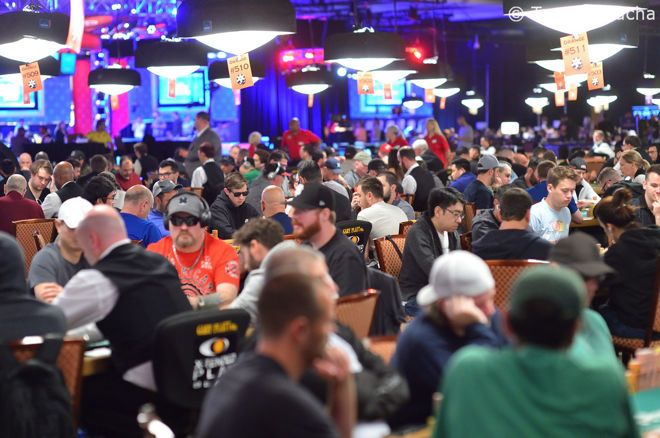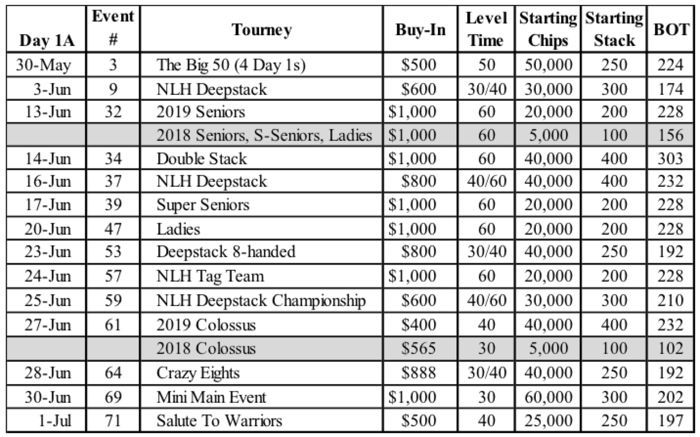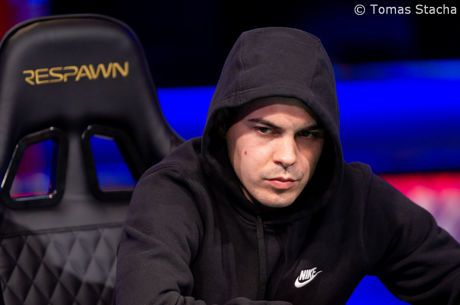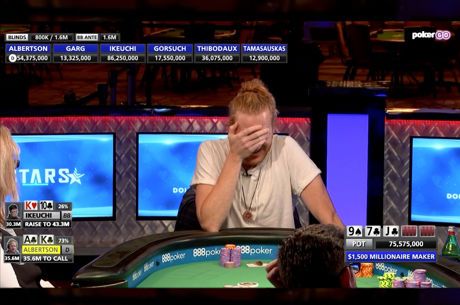The 2019 WSOP on a Budget: Slower Structures in Low Buy-in NLHE Events

Many of us love the large fields and huge prize pools that the World Series of Poker offers. There is nothing like it on the planet. But most of us must consider two additional factors when choosing which events to play: quality and cost.
Tournament Quality
Chapter 3 of my new book Tournament Poker for the Rest of Us discusses tournament quality. The simplest metric for comparing tournament quality is what I refer to as the true "Blind-Off Time" or BOT. This is the actual number of hands we would be dealt if we folded every hand. This is the true BOT because it accounts for the fact that the blinds and antes are escalating. Although no one actually plays a tournament this way, it is an intuitive way to compare the speed of various tournament structures.
For a skilled player, tournament quality correlates to tournament speed. The slower a tournament plays, the more hands we will be dealt, providing more time to put our superior skills to work, as well as more time for the "luck" aspect of poker to even out.
For example, we will all see pocket aces about once every 200 hands (221, to be exact). Therefore, doubling a tournament's BOT will double the number of times we expect to see aces. Our superior skill should allow us to win more chips with those aces than our opponents will win.
Furthermore, a slow tournament structure provides more time to figure out how our opponents are playing. Our superior skill allows us to exploit this knowledge to make more accurate reads. The longer we have a healthy stack, the longer we postpone the "crapshoot" stage of short-stack decision making. I love slow tournaments!
The 2019 WSOP is Better Than Ever
If you've been following the reporting here on PokerNews during the first few weeks of the series, you've noticed the WSOP has made a major change this year to its no-limit hold'em structures. Nearly every NLHE event uses the same structure sheet, and they all use the Big Blind Ante. I discuss the benefits of the Big Blind Ante in Chapter 3 as well �� I am a big fan of it.
Traditional ante structures require each player to post an ante before the hand is dealt. This slows the game down and increases the possibility for mistakes. This process can be streamlined by requiring a single player to post the antes for the entire table. At the WSOP, the player in the big blind posts his own 1 BB plus another 1 BB as the "table ante."
This structure has many advantages, but one of the most important for the skilled player is that the pot will always contain exactly 2.5 BBs when we have an open opportunity, regardless of how many players are dealt in. This makes our preflop math constant, including our game theory shoving ranges.
But the WSOP has done more than simply change its ante method. It appears to have made a conscious decision to provide more play. They have done this by giving us more starting chips and, more importantly, more big blinds in our starting stack.
Before the series began I tabulated the "budget" or BOT for a number of no-limit hold'em events costing $1,000 or less. Take a look below:

Let's consider this year's version of the "Colossus" that begins later this month (I've included the 2018 version in the table as well for the sake of comparison.)
Event #61: $400 The Colossus No-Limit Hold��em starts with a four times larger starting stack (in big blinds) than did last year's Colossus, and has a reduced price as well. They have also increased the level time from 30 minutes to 40 minutes. The result is a Blind-Off Time or BOT that is 2.3 times better than it was last year.
Most other 2019 events are also improved this year. For example, the 2019 Seniors, Super Seniors, and Ladies events all had BOTs of 228 hands this year, compared to only 156 hands last year.
The "Budget Events"
There was a time when the Colossus and Giant were the only budget tournaments on the schedule, and they were essentially turbo events. This year there was Event #3: $500 The BIG 50 No-Limit Hold'em to kick things off (with a BOT of 224 hands) with the Colossus coming up (with a BOT of 232), making both better than nearly every 2018 $1,500 NLH event. Multiple Day 1 flights (there were four for the BIG 50, and there will be two for the Colossus) also have made it possible to play more of these "budget events."
Other budget events still to come include Event #59: $600 Deepstack Championship No-Limit Hold'em (with a BOT of 210) and Event #71: $500 Salute to Warriors No-Limit Hold'em (with BOT of 192). These events are not quite as good as the BIG 50 and Colossus, but they are each significantly better than most of last year's $1K NLHE events.
The "Near Budget Events"
There have also been many similarly-structured events for a slightly higher entry fee. Event #37: $800 No-Limit Hold'em Deep Stack (BOT = 232) was just as good as the Colossus will be with only a slightly higher entry fee. As mentioned, the Seniors, Super Seniors, and Ladies events (with $1,000 buy-ins) all had BOTs of 228 hands, nearly the same as the Colossus. Meanwhile the Event #34: $1,000 Double Stack No-Limit Hold'em (BOT = 303) was the best $1K tournament at this year's series.
Coming up, the Event #64: $888 Crazy Eights No-Limit Hold'em (BOT = 192) and Event #69: $1,000 The Mini Main Event No-Limit Hold'em (BOT = 202) are not quite as good as those mentioned above. But they are still excellent events, worth playing if your schedule does not permit playing one of the slightly better tourneys.
Conclusion
Those of you who are not sponsored pros or who have limited resources must be selective when in comes to choosing events in which to invest your time and money. If you like tournaments with slower structures and more "play," hopefully this discussion of the new structures will highlight some attractive options for you to consider as you plan out the rest of your WSOP.
Steve Selbrede is the author of six poker books, The Statistics of Poker, Beat the Donks, Donkey Poker Volume 1: Preflop, Donkey Poker Volume 2: Postflop, Donkey Poker Volume 3: Hand Reading, and Tournament Poker for the Rest of Us.









